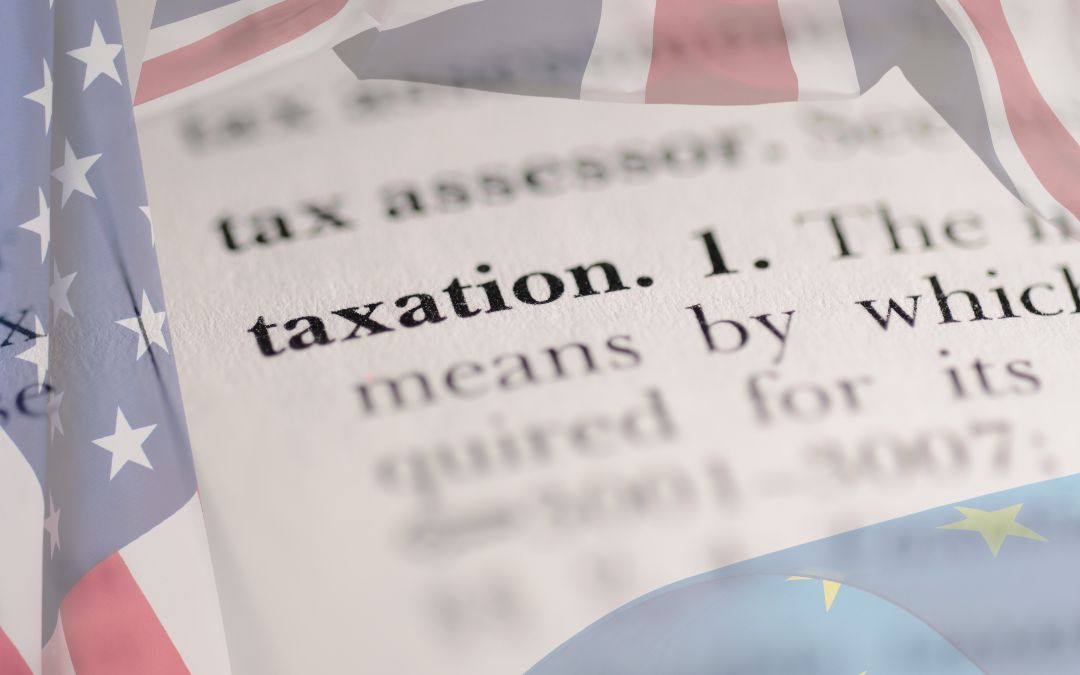Is the grass greener? Election year campaigns give presidential candidates the opportunity to present tax policy changes. Though the president does not control tax policy, intended tax policy changes offers insight into how promises would be financed. For some reason, politicians often compare US taxation to European systems. Contrasting the main tax categories may offer better perspective not offered by political candidates.
Tax structures in the US, UK, and Europe differ in rates, frameworks, and principles. The US generally uses a progressive federal tax system with additional state and local taxes. In contrast, Europe and the UK impose higher income taxes and value-added taxes (VATs) to fund extensive social welfare programs like healthcare. These policies reflect differing societal priorities, shaping economic behaviors and government revenue.
Sales taxes in the US differ significantly from the UK and Europe’s Value Added Tax (VAT) system, not only in the tax rate but also in the way they’re applied. In the US, state-collected sales taxes are applied to consumers at the point of sale and vary widely by state and municipality. In contrast, European VATs range from 17%-27% and are applied at each stage of the supply chain. While the VAT system leads to higher overall costs for consumers, the tax is baked into the cost of the item or service, rather than charged to the consumer at the point of sale. Meaning, European consumers may not be aware of the taxes they are paying.
The US, UK, and Europe all use progressive income tax systems, and the exact amount of income tax you pay depends on the amount of income you earn each year, but the tax rates for high earners in Europe are among the highest, exceeding 55% in countries like France. The UK is next, with its highest tax band coming in at 45%, and finally, the US topping at 37%. However, state income taxes can increase overall US rates. While not all states in the US levy an income tax, high state income tax rates can drive combined corporate federal and state taxes to levels comparable to some of the highest European rates.
The US corporate tax rate was set at 21% by the Tax Cuts and Jobs Act of 2017. Additionally, 44 states and Washington, DC, impose their own corporate taxes, ranging from 2.5% to 11.5%. In Europe, corporate tax rates in major economies are generally between 24% and 25%. Some European countries phase in corporate tax rates. The combined federal and state corporate tax rates rival many European corporate tax rates.
Capital gains taxes differ significantly between the US and Europe. In the US, short-term gains are taxed at personal income tax rates, while long-term gains are taxed between 0% and 20%. European countries, however, impose higher fixed rates of 26% to 34% on capital gains for top earners. The US purposefully differentiates between short-term and long-term capital gains taxation to encourage investment, including research and development activities. Speculators, generating earnings from near-term trading profits, are taxed as if those trading profits are earned income, similar to W-2 job income.
The tax structures in the US, UK, and Europe highlight different societal priorities, affecting economic behavior and government revenue. The US system favors disposable income and, like the UK, encourages personal investment, while Europe’s higher taxes fund extensive social programs like universal healthcare. Understanding these differences is essential for navigating the economic landscapes of these regions. In many cases, aggregation of federal and state US taxes often approximates European levels.
https://taxfoundation.org/data/all/global/oecd-tax-revenue-by-country-2024/
CRN-6959362-082724


Recent Comments